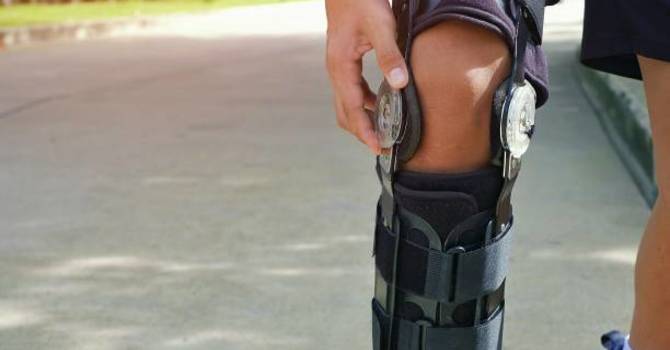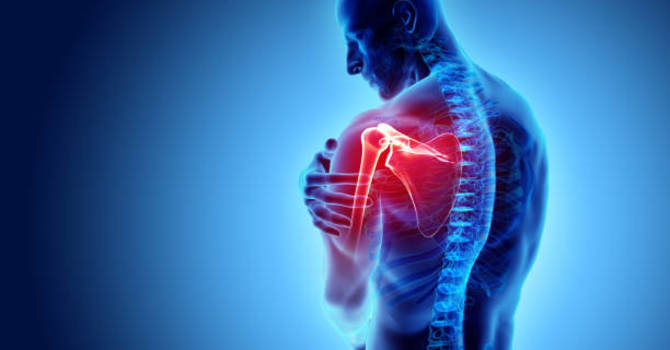
If you’re suffering from shoulder pain, rotator cuff injuries, or joint inflammation, you may have come across PRP injections as a natural, regenerative treatment. One of the most common questions we hear at Tulsi Wellness Club is:
“What is the recovery time after a PRP injection in the shoulder?”
Whether you're dealing with a sports injury, repetitive strain, or osteoarthritis, PRP (Platelet-Rich Plasma) therapy is a promising, minimally invasive treatment option that uses your own blood to stimulate healing. But like any medical therapy, understanding what recovery looks like—including possible detox reactions or systemic responses—is key to setting realistic expectations.
In this article, we’ll explore:
-
What PRP shoulder injections are
-
Typical recovery timelines
-
What you may feel during the healing process
-
Rare but notable side effects (including detox-like symptoms and blood sugar shifts)
-
How to support a full and smooth recovery
What Is a PRP Injection for the Shoulder?
PRP (Platelet-Rich Plasma) is derived from a small sample of your own blood. It’s spun in a centrifuge to isolate growth factors and healing platelets, then injected directly into the injured or inflamed area of the shoulder—often targeting the rotator cuff, tendons, or labrum.
These platelets are rich in bioactive proteins that support tissue repair, reduce inflammation, and stimulate collagen production—making PRP an ideal therapy for conditions like:
-
Rotator cuff tears or tendinopathy
-
Frozen shoulder (adhesive capsulitis)
-
Shoulder bursitis
-
Joint degeneration or arthritis
-
Post-surgical shoulder healing
Typical PRP Shoulder Recovery Timeline
While PRP is a natural therapy, it’s also a biological process—which means healing happens in stages and varies from person to person. Here’s a general outline of what to expect:
Day 1–3: Acute Inflammation Phase
You may feel soreness, swelling, or heaviness in the shoulder for the first few days. This is normal—and even desirable—as it means the healing cascade has begun. It may feel like a mild flare-up of your existing pain.
At Tulsi Wellness Club, we call this the “ignition stage”—where your body wakes up its own repair mechanisms.
Support Tip: Avoid NSAIDs (like ibuprofen), as they can suppress inflammation needed for PRP to work. Instead, opt for ice packs, hydration, and anti-inflammatory nutrition.
Week 1–2: Early Regeneration
Pain typically begins to lessen, and mobility gradually improves. You may still feel some tightness or tenderness, especially when using the shoulder.
Gentle stretching, guided by your provider or physical therapist, can help stimulate blood flow without overloading the healing tissue.
Week 3–6: Repair & Remodeling
This is where the real tissue rebuilding occurs. Collagen begins forming, micro-tears are repaired, and inflammation stabilizes. Most clients notice significant reduction in pain and improved function by this stage.
Most people return to moderate activity within 2–3 weeks, with full return to high-intensity or athletic movements around the 6–8 week mark—depending on the severity of the injury and individual healing response.
Detox or Systemic Reactions: Can PRP Trigger Them?
While PRP is localized, it still involves immune and inflammatory activation, which means some clients may experience mild systemic symptoms, especially if they are highly sensitive or dealing with chronic illness.
These detox-like reactions may include:
-
Fatigue or brain fog for 1–2 days
-
Mild flu-like symptoms (especially after larger injections)
-
Increased thirst or urination as the lymphatic system clears inflammatory waste
Though uncommon, this is your body processing and clearing damaged tissue—especially if PRP is used in combination with detox therapies like EBOO, IV ozone, or infrared sauna.
At Tulsi, we recommend light activity, hydration, and mineral support post-injection to help the body process inflammation efficiently.
Can PRP Affect Blood Sugar?
PRP itself is unlikely to cause hypoglycemia, but it’s not uncommon for clients to arrive nervous, fasted, or under-hydrated, which can temporarily affect blood sugar or blood pressure—particularly if they’re sensitive to needles or medical procedures.
Signs to watch for:
-
Lightheadedness or dizziness
-
Nausea
-
Sweating or shakiness
To prevent this, we always recommend a protein-rich meal before your session, and our team is trained to monitor and manage any minor post-procedure reactions.
How to Maximize Your PRP Shoulder Recovery
Your recovery isn’t just about the injection—it’s about supporting your body’s healing potential. Here’s what we recommend at Tulsi Wellness Club:
Eat anti-inflammatory foods: Prioritize omega-3s, greens, and clean protein
Hydrate deeply: Water, electrolytes, herbal teas
Rest the shoulder: Avoid heavy lifting or overhead movement for at least 1–2 weeks
Supplements: We may recommend collagen, curcumin, or amino acids to support tissue repair
Detox support: Lymphatic massage or sauna may help, especially if you have sluggish detox pathways
No NSAIDs: Stick with natural anti-inflammatories like turmeric, boswellia, or arnica
Final Thoughts: Healing Takes Time, But It's Worth It
PRP shoulder injections are not a quick fix—they are a deep fix. While the full benefits may take several weeks to unfold, what you’re getting is real, biological repair—not temporary numbing of pain.
At Tulsi Wellness Club, we take an integrative approach to PRP therapy. We don’t just inject and send you on your way—we walk with you through every phase of healing with education, support, and personalization.
Whether you’re recovering from a sports injury, dealing with chronic shoulder issues, or looking for alternatives to surgery, PRP could be the natural regenerative option your body has been waiting for.
Ready to heal from the inside out?
Book your PRP consultation today at Tulsi Wellness Club and let’s get you back to pain-free, functional movement—naturally.
Tulsi Wellness Club
Where Modern Medicine Meets Regenerative Healing.
Dr. Devin Stone
Contact Me



